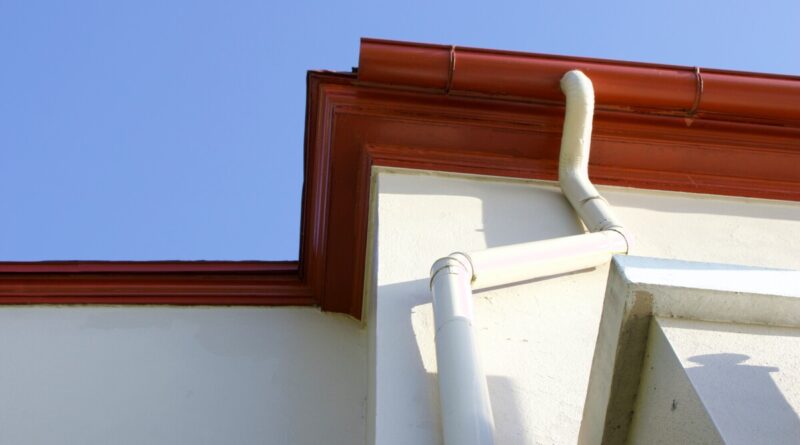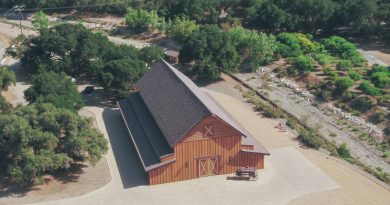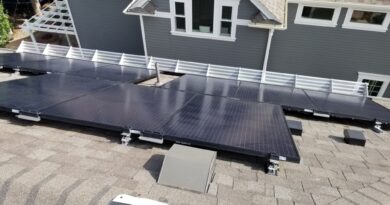Roof Maintenance Programs
Inspections Protect Investments, Generate Business, & Build Trust
by Paul Scelsi, marketing communications manager, Air Vent
(Editor’s Note: Paul Scelsi is marketing communications manager at Air Vent and leader of its “Attic Ventilation: Ask the Expert™” seminars on www.airvent.com. He hosts the podcast, “Airing it out with Air Vent,” and he’s the chairman of the Asphalt Roofing Manufacturers Association Ventilation Task Force. He is the author of the book, “Grab and Hold Their Attention: Creating and Delivering Presentations that Move Your Audience to Action.”)
Most homeowners will buy a new roof once or twice during their lifetime, unless Mother Nature forces a roof replacement more frequently. Sandra Daffer, co-owner of Hawaiian Built Roofing, Boise, Idaho, has incorporated a roof maintenance program into her business that puts her company at the customer’s house and on the roof twice a year, every year. She shared how it works and its many benefits in an episode of Air Vent’s Airing it out with Air Vent podcast.
“The maintenance program is something we really wanted to launch within the last few years to make sure that people’s homes can last as long as they possibly can and to prevent major problems from happening,” Daffer said. “We are checking to verify that the roof and home are operating as they should.”
The Checklist
Daffer lists the key areas Hawaiian Built Roofing examines as part of the yearly maintenance program.
1) Attic Ventilation
“We make sure the roof attic is ventilated properly. A lot of times we arrive at the house and the complaint by the homeowner is that it’s very hot in the summer or it’s very cold in the winter inside the house. They cannot maintain a consistent temperature. A thorough attic inspection can identify if the ventilation is sufficient and if the insulation is correct. This solves a lot of the issues,” Daffer said.
2) Overall Condition
“Yes, shingles have a warranty to last a certain number of years, but that doesn’t mean they will last that number of years if the roof is not maintained correctly. So we check the roof’s condition,” Daffer said.
3) Excessive Debris
“If there are a lot of trees around the house, they might create debris in the valleys on the roof. We check to make sure the water flows on the roof the way it should, so it doesn’t become a problem,” Daffer said.
4) Gutter Cleaning
“When we visit the house during the maintenance program we clean the gutters twice a year. We want to make sure the gutters are working properly so that in the winter when we’re covered under snow and ice it’s not going to stop that water from being able to flow off of the roof,” Daffer said. “If the water cannot flow freely, it could create a dam and possibly intrude into the attic and home.”
5) Pipe Flashings
“Pipe flashings can deteriorate over time which could allow water into the roof,” Daffer said. “So if we can do an overall roof inspection we can find these little issues before they become major issues allowing water into the home.”
Membership
The maintenance program offered by Hawaiian Built Roofing is a membership plan called Overhead Care Club, and homeowners can sign up for $179 per year. The first year is free with a new roof purchase, however it’s available for any age roof and any homeowner.
“We’re willing to service every roof out there, it does not have to be a roof we installed,” Daffer says. “If it is a roof we installed, the maintenance program allows us to verify that the parts and pieces are good, correct, and working as they should. If it’s a roof installed by another company, most do not offer maintenance programs. We’re more than willing to help anybody with any roof in any condition at any age. If we can extend the life of the roof, we’ll do it. If there’s no more life left for that roof and we’ve exhausted all other options, we’re hoping to get a replacement roof from that homeowner.”
Each subscription year includes two visits by Hawaiian Built Roofing. After the second visit, the homeowner is offered the option to renew for the year ahead. “The first yearly visit is anywhere between March and April so we can get all the after-winter debris off the roof and out of the gutters. The second yearly visit is between late October and early November. During this visit we check the condition of the roof. If we had any major windstorms, hailstorms, or anything that might have caused the roof to no longer perform properly, we check for that,” Daffer said. “We check and clean the gutters at this time, too, so they are ready for winter. If homeowners go into winter with very dirty and clogged gutters, and then the roof and gutters are snow or ice-covered, you’ve got a solid brick of water in the gutter.
“This frequency of visits not only allows us to address any issues, but we can also document before and after our visits, so we know what has changed between maintenance inspections,” Daffer said. She recommends that homeowners involve their insurance companies if they think they may have a claim to file.
Additional benefits with the Overhead Care Club include a 10% discount on labor involved in all repairs and priority booking with Hawaiian Built Roofing in the case of an emergency during the year such as a fallen tree or a severe storm.
“If it is time to replace the roof down the road and we are not the original installers, we hope they call us first because of the relationship we have built through the Overhead Care Club,” Daffer said. “We’re already very familiar with the roof.”
Role Play Pitch
During the podcast interview, Daffer and I role played how she might introduce the maintenance program to me, the homeowner, who just paid for a new roof installed by Hawaiian Built Roofing, complete with balanced intake and exhaust attic ventilation, of course.
“First of all, Paul, thank you so much for your business. We appreciate you trusting us with your roof replacement. As a bonus to you our customer, we’re going to give you a one-year free membership to our Overhead Care Club. We want to make sure you see what benefits we have to offer. All roof replacements receive this free one-year membership. Going forward after year one it’s only $179 a year to continue membership. If you’re interested at that time we can have that conversation then.”
One might wonder what’s the value of membership that first year since the roof is brand new. “We want to verify that everything on that roof is performing as it should, all the parts and pieces,” Daffer said. “We’re building trust with the homeowner. We’re creating the trust factor with this maintenance program.”
Daffer said the maintenance program has helped create new business. “I definitely think it has helped our business. I track it now as to what amount of money is generated from the membership. It can be anywhere from a small repair of $400 to a big repair of $1,800. It opens the door for us to be able to inform homeowners that what we found is a potential problem and we can fix it right now. Most homeowners say yes because no one wants a roof to leak. Plus, sometimes regular repairs turn into roof replacements.”
Daffer explained the thoroughness of Hawaiian Built Roofing’s inspections. “We closely look at the shingles, we look at all roof penetrations, and we evaluate the attic ventilation, both intake and exhaust.” Daffer said attic ventilation in particular is one of her passions because of its upside, so her team is very focused on properly vented attics.
“Attic ventilation is the most important part of the roof system,” Daffer said. “We have attic inspection kits we can use to diagnose the airflow, or lack of it, in the attic. When a customer says their living space is too hot in the summer, we can check further to pinpoint what’s happening. We can compare the attic temperature to the outside temperature and explain what’s normal and what’s not normal. Homeowners are very happy because we have solutions to their current problems that we found. We can explain with confidence why attic ventilation is so important; why it takes extra time, effort, and materials to do it correctly; and what benefits will result. Those benefits could include prolonging the life of the roof, energy savings inside the house, and improved comfort.”
Daffer has a recommendation for any homeowner researching a roof replacement. “Don’t worry about who is going to install the new roof for the lowest price in the fastest amount of time,” she said. “Worry about who is going to do the best work for your home and roof. Choose the right contractor for your home. Find out who is actually doing the work. Do your research. Obtain documentation detailing the work performed and any warranties that come with that work.”



